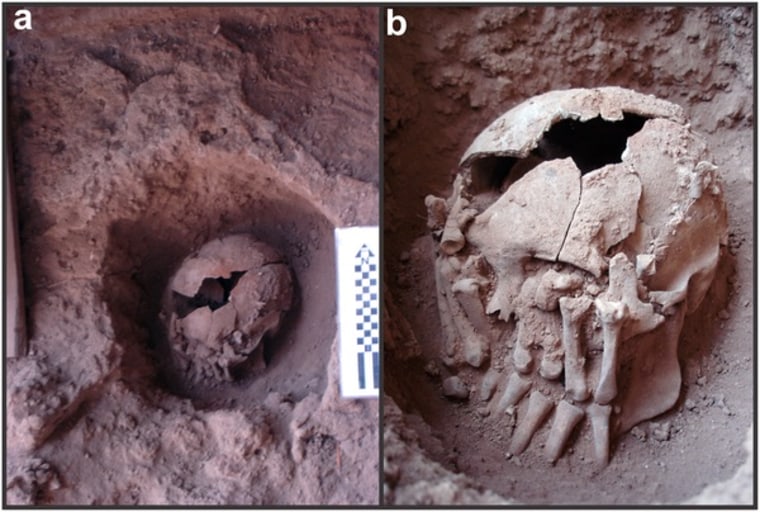A 9,000-year-old skull found during an excavation of Brazilian ruins represents the earliest known instance of ritual decapitation in the Americas, researchers have determined. The skull was found in 2007, at a dig site in central eastern Brazil known as Lapa do Santo, but studies of it have only just been completed, and were published Wednesday in the journal PLoS One.

André Strauss and colleagues from Germany's Max Planck Institute for Evolutionary Anthropology examined the skull and nearby bones and objects minutely and tested their age with radiocarbon dating. The remains were found to be between 9,127 and 9,438 years old -- 4,000 years older than the earliest known decapitation in South America, and 1,000 years older than that from North America.
Little is known about the young man called Burial 26, but Strauss writes in the study that it seems unlikely that the decapitation was an act of aggression. The careful removal of the hands and their placement against the opposite sides of the face, along with other small hints, suggest this was "part of a broader set of mortuary rituals involving a strong component of manipulation of the body."
Related: 430,000-Year-Old Murder Mystery: Broken Skull Hints at Earliest Homicide
Further insight will come not from closer examination of Burial 26's remains, but from investigation of the culture he was a part of, Strauss writes. "This ritualized burial attests to the early sophistication of mortuary rituals among hunter-gatherers in the Americas," Strauss wrote.

